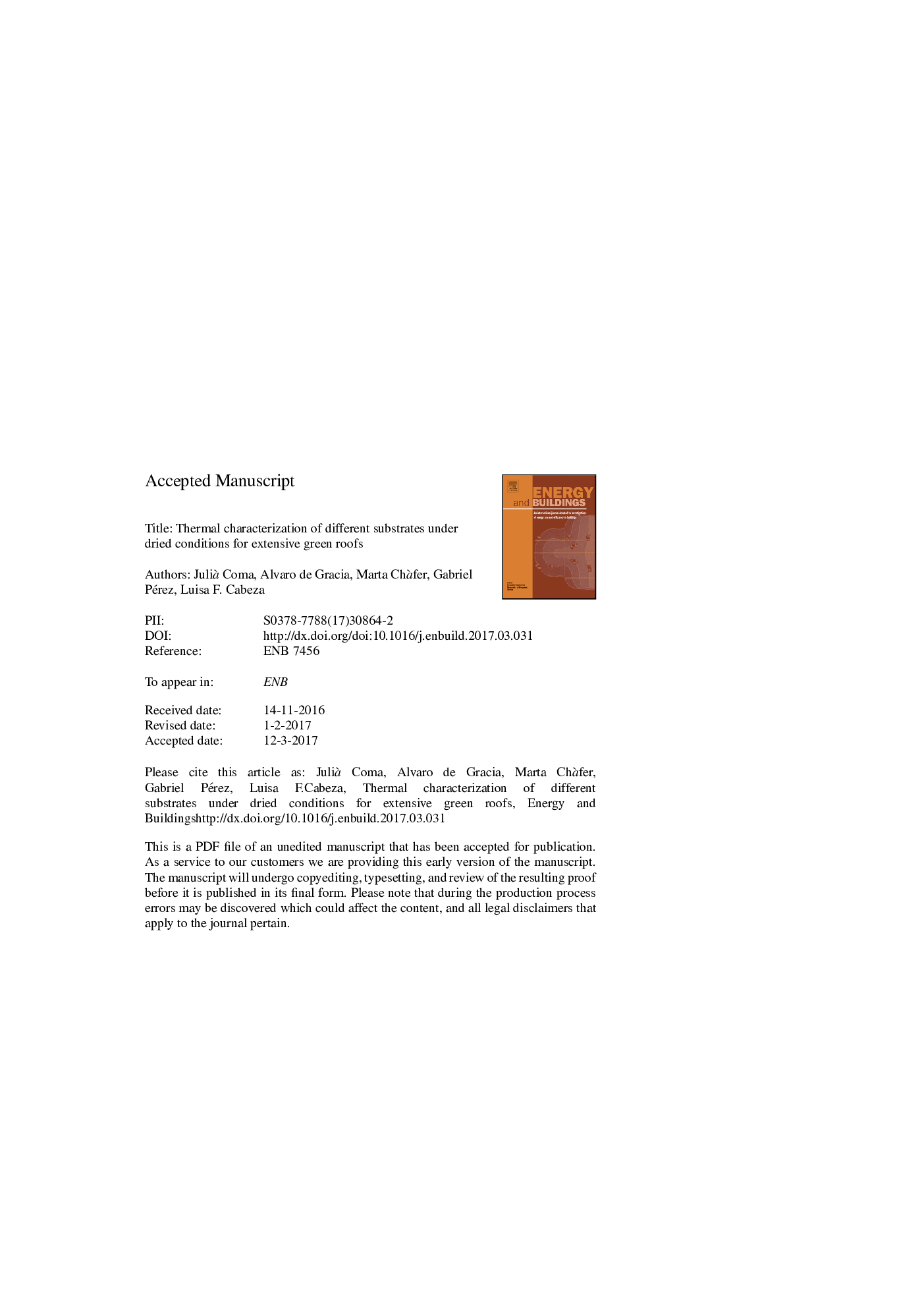| Article ID | Journal | Published Year | Pages | File Type |
|---|---|---|---|---|
| 4919184 | Energy and Buildings | 2017 | 14 Pages |
Abstract
Extensive green roofs have been consolidated as good tools for passive energy savingsystems in buildings, providing a more sustainable trend in the building field. However, as the growth of vegetation is variable depending on external factors such as weather conditions, disease, etc. the coverage of plants cannot ensure uniformity and consequently the “shadow effect” cannot be considered as a constant parameter. On the other hand, materials used in substrate and drainage layers should provide a constant “insulation effect” depending only on their physical properties and water content. In spite of this, the complexity of disaggregated materials used in internal layers of extensive green roofs implies a lack of real data about their thermal properties. The main objective of this study is to determine experimentally the physical properties of different disaggregated materials from the internal layers of extensive green roofs commonly used in Mediterranean climates. The experimentation presented in this paper allows to calculate the thermal transmittance in steady-state (U-value), the heat storage capacity (Cp), and the dynamic thermal response under a daily thermal oscillation.
Related Topics
Physical Sciences and Engineering
Energy
Renewable Energy, Sustainability and the Environment
Authors
Julià Coma, Alvaro de Gracia, Marta Chà fer, Gabriel Pérez, Luisa F. Cabeza,
